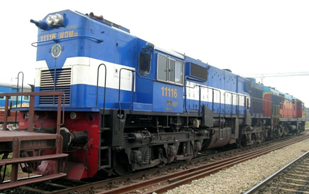Populism in India’s Rail Budgets
Better passenger amenities, safer rail travel, modernization, capacity addition and financial self-sustainability are the goals outlined in the Railway Budget 2015. Preparing budget focusing on building infrastructure, passenger services and capacity within the limited resources is surely an uphill task. And the department seems passing the test. It is known that the railway acts as backbone of logistics in India. Since it carries 22 million passengers every day, hence termed the vehicle of the common man. Balancing the economic and the social expectation the budgets outlays a road map for improving the railways in the time to come. The vision document vision 2030 pointing out an overhaul of the railways including the infrastructure to services.
Away from the precedence
The ministry distanced itself from the populist approach of pleasing the people or the region by announcing the new trains and unviable projects. The already burdened tracks are choked with trains running between stations not having much density of passengers making the network inefficient. This time the budget focused on restructuring the existing network, augmenting the capacity and improving the amenities in terms of services at the stations, rails, safety, and cleanliness. It sets forth the priorities of the government to move towards a concrete roadmap to re-vitalize the sector.
Innovatively raising the funds
The obvious fact that comes to mind about the poor railways is the financial crunch that the railways face. Lesser revenue is raised by the way of fares, as the freight revenues are majorly utilized to compensate the passenger fares. In such a situation the department receives funds by insufficient budgetary allocation and market borrowing through the IRFC (Indian Railway Finance Corporation Ltd) and non-starter PPPs. The budget unleashed the innovative financing partnering with the beneficiary states, major customers, PSU’s, annuity, multilateral and bilateral institutions like the world bank, joint ventures and relying on equity. A new financing cell is proposed to be set up in the railway board to look after raising the finances.
This year the plan of the budget is expanded 52% and in such need the idea is to raise the low-cost funds like the insurance and pension funds. Such innovative method if applied would take the railways to the next level.
Governance
Government initiated the process of decentralization of works and stores to the General managerial level as it would enhance the efficiency and speed up the procedure. The budget proposes a new paradigm of better governance, transparency, and management reforms. It would take out the sector drenched in inefficiency, corruption, opaqueness and over-centralization, and departmental silos. Decisive actions would be the key to see these reforms into actions. It is also the right time to unleash the opaque railway board and reform the decision making procedure.
In the past years it was seen that the railways accounting system is not in sync with the commercial operation. The budget focuses on bringing in the best practices of accounting in sync with the requirement of the organization.
Railway services
Budget in order to make common-man’s vehicle comfortable, took number of steps. There is no rise on the railway fares as it was just raised hence was least expected too. The budget took care of the passengers need including the food choice, access to clean drinking water, wi-fi in the selected stations and more charging points etc. Also “Swachh Rail, Swachh Bharat” a slogan was raised to show the commitment of government to clean the mess in Indian railways and stations. 17000 bio-toilets are targeted for the year. A five-year railway safety plan is underdevelopment. Satellites based applications to avoid the collision would be implemented, making the crossing safer by building pedestrian bridges.
Infrastructure
The budget announces a massive push to railway electrification. It is to understand the fact the at present 35% of the electrified traction of the Indian Railways carry 2/3rd of the freight and half of the passengers burden, and for rest of the freight and passengers railway spent around 22000-25000 crore annually on the petroleum and oil as fuel. It will bring the financial savings to the sector and leverage the money for other services. It raised the expenditure on capacity augmentation and for doubling/tripling the electrification of tracks. Also the station redevelopment along with building the satellite stations would be on priority as it would decongest the stations.
Research Centers
The budget announces the railway research centers in the universities. Innovation council is laudable move to improve the research on railway engineering. The overseas railway experts would be consulted through the Foreign Rail Technology Cooperation Scheme (FRTCS) and would help enhance the speed in the said railway corridors.
Private Participation
The private investment would be allowed for building the infrastructure. For station redevelopment the private developers would be called upon for open bids on concessional basis and would leverage the land resources in the station vicinity. Investment would be expanded for facilitating the production of wagons. Concession agreement in force and simplified procedures would enhance the investment. Also the issues such as transparency, monitoring the projects would be given the high priority.
Bottom line, the budget is pragmatic and steady movement forward towards building the crucial infrastructure with a roadmap for future bringing Railways at par with its potentiality.



buggi
March 24, 2015 at 12:24 amThank you Sir !!
buggi
March 24, 2015 at 12:24 amThank you Sir !!